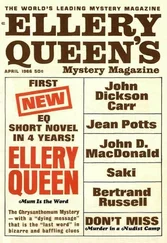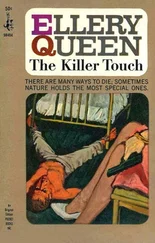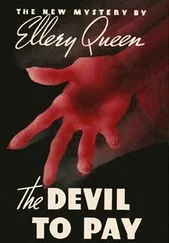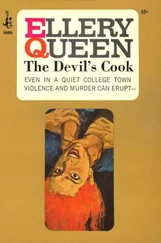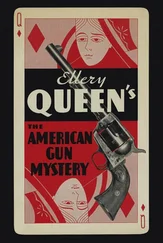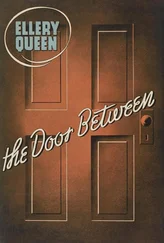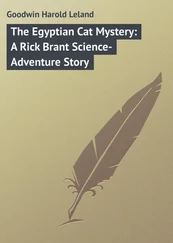“I recall,” smiled Ellery, “Bacon’s New Atlantis, but then my interests were always literary rather than scientific.”
Yardley grunted. “The same fresh youngster, I see... Quiet! Well, this is what I ran into.”
“How on earth did you happen to think of me?”
They strode along the cluttered driveway of Bradwood toward a large colonial house, its vast pillars gleaming in the noon sun.
“The long arm of coincidence,” said the Professor dryly. “I’ve followed your career with interest, naturally. And since I’m always fascinated by your exploits, I read quite avidly the accounts five or six months ago of that extraordinary murder in West Virginia.”
Ellery took in the scene before replying. Bradwood was meticulously landscaped, the estate of a wealthy man. “I might have known nothing would escape the eyes that have examined thousands of papyri and stelai. So you read that highly romanticized version of my little sojourn in Arroyo?”
“I did. And your highly romanticized lack of accomplishment.” The Professor chuckled. “At the same time, I was gratified by your application of the fundamental I tried to drive into your stubborn head — always go to the source. Egyptian cross, my boy? I’m afraid your sense of theater strangled the purely scientific truth... Well, here we are.”
“What do you mean?” demanded Ellery with an anxious frown. “The tau cross was certainly a primitive Egyptian—”
“I’ll discuss it with you later. I suppose you want to meet Isham. He’s been kind enough to let me potter around.”
District Attorney Isham of Nassau County, a stubby man of middle age with watery blue eyes and a horseshoe fringe of gray on his head, was standing on the steps of the long colonial porch engaged in heated conversation with a tall powerful man in civilian clothes.
“Er — Mr. Isham,” said Professor Yardley. “Here’s my protégé, Ellery Queen.”
The two men turned quickly. “Oh, yes,” said Isham, as if he were thinking of other things. “Glad you came, Mr. Queen. I don’t know what you can do to help, but—” He shrugged. “Meet Inspector Vaughn of the Nassau County police.”
Ellery shook hands with both of them. “You’ll permit me to wander about? I promise not to get under your feet.”
Inspector Vaughn displayed brown teeth. “We need somebody to get under our feet. We’re just standing still, Mr. Queen. Like to see the main exhibit?”
“I suppose it’s customary. Come along, Professor.”
The four men descended the steps of the porch and began to walk along a gravel path around the eastern ell of the house. Ellery experienced a sense of the vastness of the estate. The main house, he now saw, was situated halfway between the private highway where he had left his Duesenberg and the waters of a cove, whose sun-painted ripples were visible from the elevation of the main house. This body of water, District Attorney Isham explained, was a tributary of Long Island Sound; it was called Ketcham’s Cove. Beyond the waters of the Cove could be seen the woody silhouette of a small island. Oyster Island, remarked the Professor; housing as queer a collection of...
Ellery looked at him inquiringly, but Isham said: “We’ll get to that,” testily, and Yardley shrugged and refrained from further interruption.
The gravel walk led gradually away from the house, and massed trees enclosed them not thirty feet from the colonial structure. A hundred feet farther, and they came suddenly upon a clearing, in the center of which stood a grotesque object.
They stopped short, and ceased talking, as people do in the presence of violent death. Around the object were county troopers and detectives, but Ellery had eyes only for the object itself.
It was a thick carved post nine feet high which once, to judge from what remained, had been garishly colored, but now was faded and stained and battered, as if it had gone through centuries of weathering. The carving, a conglomeration of gargoyle masks and hybrid animal symbols, culminated at the top in the crudely hewn figure of an eagle with lowered beak and outstretched wings. The wings were rather flat, and Ellery was struck at once with the fact that the post with its outflung wings at the top was very like a capital T.
The decapitated body of a man hung on the post, arms lashed to the wings with heavy rope, legs similarly lashed to the upright about three feet from the earth. The sharp wooden beak of the eagle hovered an inch above the bloody hole where the man’s head had been. There was something pathetic as well as horrible in the hideous sight; the mutilated corpse emanated a helplessness, the pitiful impotence of a beheaded rag doll.
“Well,” said Ellery with a shaky giggle, “quite a sight, eh?”
“Shocking,” muttered Isham. “I’ve never seen anything like it. It makes your blood curdle.” He shivered. “Come on; let’s get this over with.”
They drew nearer the post. Ellery noticed that some yards away, in the clearing, there was a small thatched summer-house, in the entrance to which a trooper stood. Then he returned his attention to the corpse. It was that of a middle-aged man; there was a heavy paunch, and the hands were gnarled and old. The body was clothed in gray flannel trousers and a silk shirt open at the neck, white shoes, white socks, and a velveteen smoking jacket. From neck to toes the body was a gory mess, as if it had been washed in a vat of blood.
“A totem pole, isn’t it?” Ellery asked Professor Yardley, as they passed beneath the body.
“Totem post,” said Yardley severely. “Much the preferred term... Yes. I’m not an authority on totemism, but this relic is either very primitive North American, or a clever fake. I’ve never seen one quite like it. The eagle would signify Eagle Clan.”
“I suppose the body has been identified?”
“Sure,” said Inspector Vaughn. “You’re looking at all that’s left of Thomas Brad, owner of Bradwood, millionaire rug importer.”
“But the body hasn’t been cut down,” said Ellery patiently. “So how can you be certain?”
District Attorney Isham looked startled. “Oh, it’s Brad’s, all right. Clothing checked up, and you couldn’t very well disguise that belly, could you?”
“I suppose not. Who discovered the body?”
Inspector Vaughn told the story. “It was found at half-past seven this morning by one of Brad’s servants, a sort of combination chauffeur and gardener, chap by the name of Fox. Fox lives in a hut on the other side of the house, in the woods; and when he came up to the main building this morning as usual to get the car — garage is at the back of the house — for Jonah Lincoln, one of the people who live here, he found that Lincoln wasn’t ready and went around this end to look at some of the flowers. Anyway, this is what he ran up against. Gave him quite a turn, he says.”
“I imagine it would,” remarked Professor Yardley, who betrayed a surprising lack of squeamishness himself; he was examining the totem post and its grisly burden with thoughtful impersonality, as if it were a rare historic object.
“Well,” continued Inspector Vaughn, “he took hold of himself and ran back to the house. Usual stuff — roused the household. Nobody touched anything. Lincoln, who’s a nervous but levelheaded fellow, took charge until we came.”
“And who is Lincoln?” asked Ellery pleasantly.
“General Manager of Brad’s business. Brad & Megara, you know,” explained Isham, “the big rug importers. Lincoln lives here. Brad liked him a lot, I understand.”
“An embryonic rug magnate, eh? And Megara — does he live here, too?”
Isham shrugged. “When he’s not traveling. He’s off on a cruise somewhere; he’s been away for months. Brad was the active partner.”
Читать дальше


